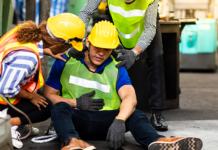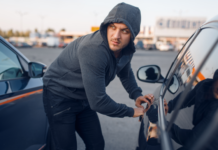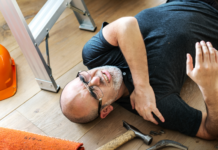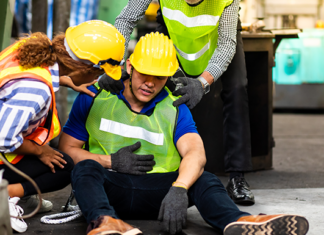Whether sprucing up your office or your home, many of the festive decorating and activities we partake in during the holidays can be dangerous. Here is some advice on how to keep your holiday celebrations safe.
Safety First When Hanging Lights
When hanging lights, replace light sets that have broken or cracked sockets, frayed or bare wires, or loose connections. LED lights are a great option to consider. They use less energy and last longer than incandescent lights. Putting your lights on an automatic timer is another great way to reduce energy use.
Read packaging information carefully to make sure you aren’t exceeding the maximum number of strings or devices that can be linked together. Avoid overloading electrical outlets and plug all lights and decorations into ground-fault circuit interrupters (GFCIs) to reduce the risk of electric shock. Portable GFCIs for outdoor use can be purchased where electrical supplies are sold.
If hanging lights outdoors, make sure to use extension cords made for outdoor use and are not frayed. Always keep your plugs off the ground and away from puddles and snow, and never staple or nail through electrical wires or extension cords as this may cause electrical shock or fire.
If hanging lights with ladders, use wooden or fiberglass ladders instead of metal ladders, as metal conducts electricity. The ladder should extend three feet above the roofline or working area if hanging lights from the roofline. The ladder should always be on level, stable ground.
Holiday blowups are fun and easy but don’t take safety for granted. If using blowups for your home or office, make sure to follow the manufacturer’s directions for securing inflatable decorations. Shut off fan blowers when it’s windy, when you won’t be home for long periods, or at bedtime.
More Holiday Safety Considerations
Candles – Battery-powered candles are a safe alternative to real candles and avoid the risk of an open flame. If you use real candles, do not place them anywhere they might be easily knocked over or near anything flammable. Always extinguish all candles before going to bed.
Plants – Some plants are toxic to pets. These include poinsettia, holly and mistletoe, lilies and daffodils, amaryllis, and Christmas cactus. Consider fake plants to keep pets safe.
Christmas trees alone can pose several hazards. Be sure your Christmas tree is placed in a sturdy base so children or pets cannot pull it over. Also, keep the tree watered so it doesn’t dry out and turn into a fire hazard.
Oils produced by fir trees can irritate a pet’s mouth and stomach, and the water used to keep your Christmas tree alive can contain bacteria, mold, and fertilizers, which can be harmful to your pet. Keep the water covered and blocked off from your pet. If you should need help, the phone number for the Animal Poison Control is 1-888-426-4435. They are available 24 hours a day.
Fireplace – Use a screen on the fireplace at all times when a fire is burning, and make sure it is extinguished before going to bed. If hanging stockings on the mantel over the fireplace, take them down when the fireplace is lit. Keep any matches or lighters locked and away from children’s reach.
Keep your tree at least three feet away from the fireplace or any heat source. If using an artificial tree, be sure it has a “fire-resistant” label.
Food – Always wash your hands before, during, and after handling food, especially when switching tasks like going from cutting meat to cutting vegetables. Use separate cutting boards, plates, and utensils for meat and produce, and use a meat thermometer to ensure meat is cooked thoroughly to a safe temperature. Refrigerate any leftovers within two hours to avoid food spoilage. Never leave your stove unattended and turn off the burner if you leave the kitchen.

















